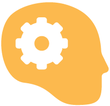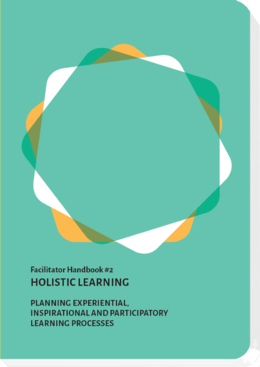Addressing Transversal Competencies
Basically, we need to make sure that the outcome of our teaching is more than just knowledge, and includes building skills and attitudes. Our methods need to be appropriate for the development of such competencies as the sum of skills, knowledge, and attitudes. When looking over your learning schedule, check, to what extent all fields of key competencies are reflected:
Task-specific factual competence |
Do your methods help your participants to: Identify adequate, knowledge-based solutions for tasks and problems?
|
Methodological competence |
Are you offering adequate opportunities for training and conscious, goal-oriented action?
|
Social competence |
How might your participants consciously experience their relationshipwith other people and actively experiment in shaping their social relationships?
|
Personal competence |
Do you leave enough space for your participants to act autonomously,in a self-organized and reflective way?
|
Balancing Diverse Needs
A variety of methods in your training can correspond to the diverse needs of your target group. The challenge is to get the attention of all your participants, despite their differing needs and preferences concerning the methods. This is less a question of what kind of competencies are being addressed than of preferred learning styles and ways of incorporating knowledge. Recognizing people’s diversity we advocate for a balance - creative and diversified learning arrangements that address different senses and stimulate participants’ motivation. For example:
|
activity - cognition |
creativity - monotony, |
groupwork - individual work |
|
playfulness - seriousness |
experience - theory |
mobility - fixed location |
So after a phase of playfulness, seriousness helps us to refocus. After a phase of group work, some people enjoy an opportunity for individual reflection.
Inhale and ExhaleLearning is a balanced circle of a learners activity ("breath out") and a more passive observing/reflecting role ("breath in"). Both need to be balanced and you might mix methods that address active experimentation with those that allow observation and reflection. After active involvement participants need a relaxation phase. After input participants wish often to become active again. |
|
|
Active Experimentation
|
Observation, consumption, reflection
|
Divergent and Convergent Thinking |
|
|
Divergent Thinking Exploring new and original ideas about a topic and drawing inspiration from the ideas or action of others leads to a colorful bouquet of opportunities. It enables participants to collect material for later reasoning, be mentally open for new experience, gain inspiration |
Convergent Thinking To enable learners' creative potential, the learning process should also encompass activities which challenge learners' capacities for convergence - evaluating, selecting, reasoning. Evaluate and organize impressions and insights, Follow a goal and finalize processes, Deepen their understanding of a certain topic or process |
The Whole PersonalityMake sure that participants' whole personalities and a diversity of learning preferences are addressed. The goal is that in larger periods of time (half days or days of a training), we use a variety of cognitive, emotional and practical learning. |
||
|
Cognition
|
Emotion
|
Practice
|











